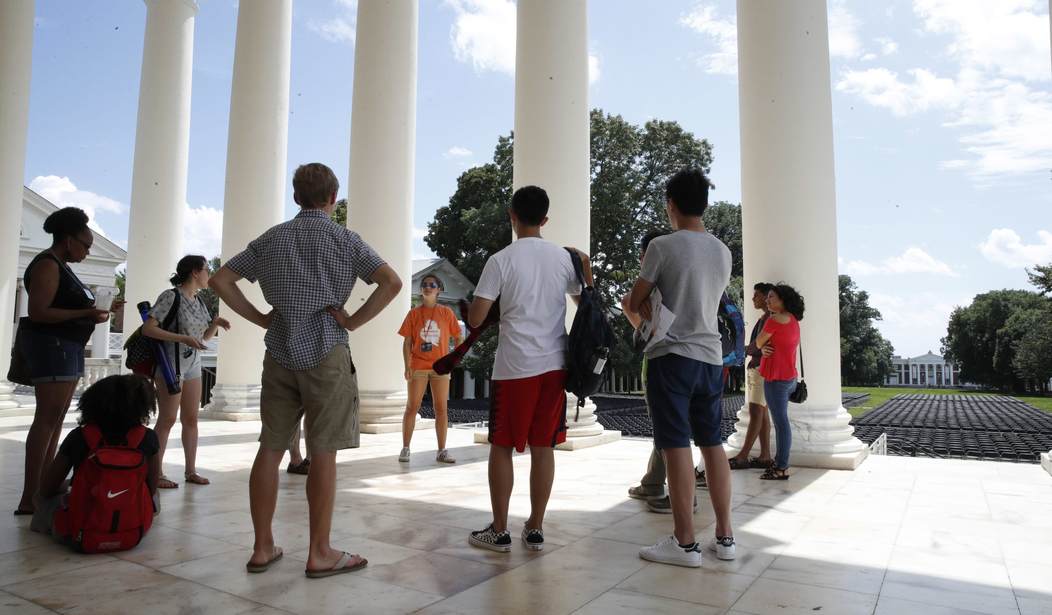WASHINGTON – In 1987, the U.S. spent $3.7 billion on Pell Grants for about 13 million college students. Today, taxpayers spend about $28 billion on Pell Grants for 20 million Americans.
Those are some of the statistics Senate Chairman Lamar Alexander (R-Tenn.) reeled off Tuesday while arguing that the U.S. does not need to fork over more taxpayer money to address what Democrats have characterized as a student loan crisis in this country.
Anyone who denies we have a college debt and affordability crisis in this country “has their head buried pretty deep in the sand,” Sen. Elizabeth Warren (D-Mass.) countered during a hearing before the Senate Committee on Health, Education, Labor and Pensions.
Congress is currently weighing reauthorization of the Higher Education Act, which was last authorized in 2008. Since 2007, student debt in the U.S. has tripled, and the number students shouldering debt has grown from 28 million to 44 million.
A recent Brookings Institution study shows that up to 40 percent of students may default on their loans. That same report noted that African-American students who graduate with a bachelor’s degree are five times more likely to default on their loans than their white peers.
“This is really taking a toll on our students,” Ranking Member Patty Murray (D-Wash.) said.
Last week, Senate Democrats released a list of principles outlining their desires for reforming the Higher Education Act. Those principles included improving college affordability, helping underrepresented populations and removing barriers to obtaining higher education. The principles were released in response to a white paper from Alexander’s staff, which offered suggestions on restructuring the loan repayment rate, among other reforms.
On Tuesday, Alexander suggested that a way to make college more affordable without appropriating more taxpayer money is to simplify the grant programs, as well as the FAFSA approval process. While Democrats agree those reforms are needed, a handful at the hearing said that Congress needs to go a step further financially to help minority populations obtain higher education.
Alexander asked Sandy Baum, a senior fellow at the Urban Institute, where she would devote additional taxpayer dollars if given the chance. The Tennessee Republican asked if she would lower rates for loans, forgive more loans or offer larger or more Pell Grants.
Baum said the U.S. should invest more money in low-income populations. She suggested that some students in higher income brackets receive Pell Grants when lower income students would be more deserving.
During his opening remarks, Alexander noted that 32 percent of American students, those from low-income families, qualify for up to about $5,900 in Pell Grants that they do not have to pay back.
The average tuition at a two-year community college was about $3,600 for the 2017-18 academic year, according to the College Board, while the average at four-year public schools was just under $10,000 for the same school year. Alexander argued that paying for college is “easier” than many think, and that it’s “unfair and untrue” to suggest that for most students college is financially out of reach. Despite this, he added, there is no doubt that college costs are rising, and some students are having difficulty paying back their debt.
Murray suggested that colleges are not doing enough to consider the burden of student loan debt and challenges in landing a good-paying job. States are also investing less in higher education, she said.
Zakiya Smith, strategy director for finance and federal policy at the Lumina Foundation, said that not only are many U.S. graduates defaulting on their loans, but many others are quietly making sacrifices in other areas of their lives.
“That message to would-be students, that it can be really, really tough and life-altering to go to college, reduces their likelihood, and their desire, to take on debt, and I think we’re seeing that backlash now,” Smith said. “So we must have really in the next reauthorization something to make sure that debt is affordable, truly affordable, and students don’t have to take on so much debt in the first place.”
Warren pointed to a “particularly alarming statistic” from the Education Department showing that almost half of all black students who took out loans in the 2003-04 academic year have defaulted on their federal student loans.
“We just learned that congressional Republicans could find $1.5 trillion to give away to rich people in corporations, but suddenly there is no money left to invest in people who are trying to get a college education, an investment that not only pays off for the individual but pays off for the whole economy and for the whole country,” Warren said.
Sen. Johnny Isakson (R-Ga.) countered that the GOP tax law is allowing people to pay for tuition that they wouldn’t have been able to otherwise. He cited a recent CNN report on two people from Cincinnati who have taken bonuses resulting from the tax law and used them to pay their children’s tuition.
“There was a reference about what we do with our money,” Isakson said. “Economic policy does make a difference.”









Join the conversation as a VIP Member